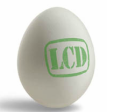Counting Carbs: Total vs. Net?
I’m often asked, “Is that total carbs or net carbs?” The answer is that there is no universally accepted answer as to how to count carbohydrates. When low-carb diets were very popular about 10 years ago, many food manufacturers began using the term “net carbs,” in which all fiber and sugar alcohols (SO’s) are subtracted from the total carbohydrate content of an item. So while an Atkins energy bar may contain a total of 23 grams of carbohydrates, its net carb content is reported as 2 grams.
As a whole foods advocate, I think people should avoid or at least limit their consumption of processed foods made with SO’s. In addition, subtracting sugar alcohol grams from the total carb content may give people a false sense of security in terms of how their blood sugar will respond. Some of the more commonly used SO’s are mannitol, malitol, sorbitol, xylitol, and erythritol. With the exception of erythritol, which does not affect blood sugar, roughly half of SO’s are partially digested and absorbed, which can raise blood glucose levels. In addition, SO’s often cause gastrointestinal issuess like abdominal pain, bloating, gas, and diarrhea, although much more rarely in the case of erythritol.
What about fiber? For many years, fiber was divided into two categories: soluble and insoluble. Although the current trend is to speak about fiber in terms of viscosity and fermentability, we have no quantifiable data regarding the proportions of these fibers contained in various foods. As far as blood sugar is concerned, it makes more sense to discuss soluble vs. insoluble fiber at this time. Soluble fiber slows the rate at which carbs are absorbed, decreasing the potential for blood sugar spikes. However, it can be fermented by colonic bacteria to the fatty acid proprionate, which is capable of being converted to glucose (This occurs in carnivorous animals, although there is little published research on humans). Insoluble fiber is not fermented and has no impact on postprandial blood sugar.
At present there is no consensus for determining how to adjust carbs for fiber content. Examples include:
1. Subtract all fiber from total grams of carbs (Joslin Diabetes Center)
2. Subtract only insoluble fiber (if known) from total grams of carbs (American Diabetes Association)
3. Subtract half of the grams of fiber if the total fiber content is greater than 5 grams (Dr. Richard K. Bernstein, American Diabetes Association)
4. Don’t subtract any of the fiber (original Atkins diet — more for weight loss than blood sugar control)
Number 3 is the most popular method and assumes that about half of the fiber is soluble and will likely impact blood sugar. It is one of the few points which Dr. Bernstein and the American Diabetes Association agree on. I personally subtract all fiber from the total carbohydrate content, but I don’t take insulin and have been able to achieve excellent glycemic control since going very low carb in 2011. For those with Type 1 diabetes or Type 2’s using carb-to-insulin ratios, I recommend using Dr. B’s method above, or ideally number 2 if you’re able to determine how much of the fiber is insoluble.
Unfortunately, most nutrition facts labels and websites only report total fiber content. Here is a comprehensive list of soluble and insoluble fiber in various foods. Most of the fiber-containing foods I consume (raspberries, blackberries, vegetables, nuts, avocados, cocoa) are quite a bit higher in insoluble than soluble fiber, so my digestible carb calculation is probably only off by a few grams. I typically eat about 60-70 grams of total carbs daily and calculate my net or digestible carb intake as 35-45 grams.
Since how to best count fiber is still up for debate, I recommend experimenting by testing blood sugar one to two hours after eating and adjusting carbs and/or insulin as needed. Although more complicated to calculate for, the benefits of a whole foods diet rich in fiber (at least 25 grams a day) can really pay off healthwise. In addition to modulating blood glucose response, the various types of fiber can improve serum cholesterol levels, decrease hunger, reduce risk for colon cancer, and/or promote regularity. I hope my short list of delicious foods in the preceding paragraph will inspire you to consume a wide variety of high-fiber items every day!
References
1. Wheeler ML, et al. Carbohydrate issues: type and amount. J Amer Diet Assoc. 2008; 108(4): S34-S39
2. Aller R, et al. Effect of soluble fiber on lipid and glucose intake in healthy subjects: a randomized clinical trial. Diabetes Res Clin Pract. 2004; 65(1): 7-11
3. Verbrugghe A, et al. Propionate absorbed from the colon acts as gluconeogenic substrate in a strict carnivore, the domestic cat. J Anim Physiol Anim Nutr. 2011 doi:10.111/j.1439-0396.2011.01220.x
4. What are Net Carbs? Diabetes Forecast Magazine


It is a known “FACT” that even the so called FAKE sugars raise insulin levels even minimally. Also, the fiber that is put in most foods is not SOLUABLE FIBER but that CHICORY type crap that is mostly proven to not act so much like REAL FIBER. Do this. 30g of carbs 10g of fiber and 10g of sugar alcohols. Only subtract half the fiber and half of any sugar alcohols for 20g of fiber. Atkins is well aware of this but get away from it. If I am saying something wrong RESEARCH IT and you will see.
I have no idea if what you are saying is right or wrong, but HOW you are saying is kind of… well.. OBNOXIOUS to copy your capitalization policy. When you subtract tact from information, you end up with NET rude.
Thank you. Really good concise article on this topic. Much appreciated.
Thanks very much, Melanie!
Excellent article. This topic is so confusing, I’m just following the principles in the new book Target 100 and consuming up to 100 total carbs a day. Easy, and hopefully, I’m really consuming less carbs, since I don’t subtract anything. What an awesome blog.
Thank you very much for the nice feedback, Ella! I’m so glad you like my article and that you’re doing well with the Target 100 plan. I think it’s a very well-balanced, sustainable plan. Best of luck going forward!